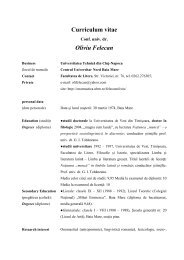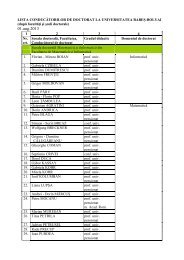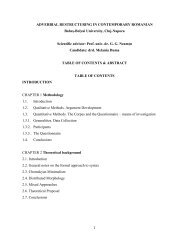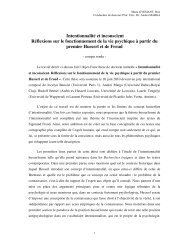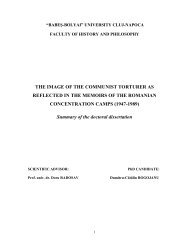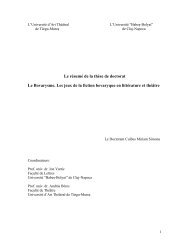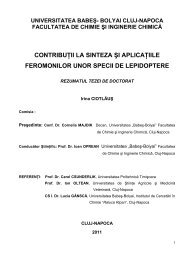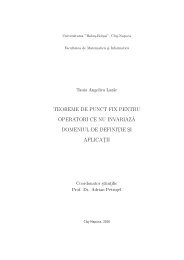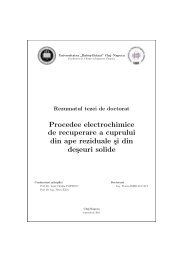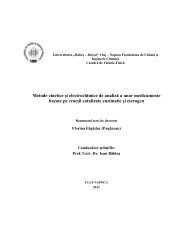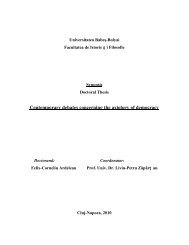CONTRIBUTION TO CINCHONA ALKALOIDS CHEMISTRY
CONTRIBUTION TO CINCHONA ALKALOIDS CHEMISTRY
CONTRIBUTION TO CINCHONA ALKALOIDS CHEMISTRY
You also want an ePaper? Increase the reach of your titles
YUMPU automatically turns print PDFs into web optimized ePapers that Google loves.
Ph.D. Thesis Abstract Contribution to cinchona alkaloids chemistry<br />
.<br />
It appears that increasing the molar ratio QCD: TEA from 1:1 to 1:2 we obtain an increase<br />
in efficiency of synthesis of the esters by about 30%. The same effect is observed with QCI<br />
aminoalcohol. Experiments have shown that for a satisfactory performance it is necessary to carry<br />
out the synthesis using reagents in the molar ratio QCD: BzCl: TEA 3:5:6.<br />
There were synthesized the esters of 1,2-aminoalcohols with benzoic acid, salicylic acid<br />
and acetylsalicylic acid. It was found that synthesis yields decrease for example from 83,8% for<br />
benzoic acid ester to 64,76% for acetylsalicylic acid. Electron attractive substitutes grafted on the<br />
benzene core decrease the reactivity of the acyl chloride. The decrease in synthesis efficiency can<br />
be explained by the steric obstruction effect.<br />
Newly synthesized compounds were characterized by H-NMR spectrometry, IR and<br />
elemental analysis. The presence of 1768 cm-1 bands, 1393 cm-1 are characteristic to benzoate,<br />
which proves the desired ester synthesis.<br />
2.2.2. Synthesis of amides of 1,2 diamine QCDNH2<br />
Amides of benzoic acid, salicylic acid and acetylsalicylic acid with diamine QCDNH2<br />
were synthesized using chlorides of the acids as acylating agents for the amines (scheme 2.15).<br />
Schema 2.15<br />
COCl<br />
+<br />
N<br />
THF, Et3N -HCl R<br />
H2N 40<br />
R<br />
28 R = H 37 R = H<br />
29 R = OH 38 R = OH<br />
30 R= OCOCH 3 39 R = OCOCH 3<br />
Synthesis of these amides is achieved with satisfactory yields 80.9% for benzoic<br />
acid amide 37, 71.7% for salicylic acid amide 38 and 49% for acetylsalicylic acidamide 39. There<br />
can be noticed the disable effect of electron attractive groups related to benzene nucleus on<br />
this reaction, highlighted by the decrease the yield of synthesis.<br />
20<br />
O<br />
NH<br />
N



